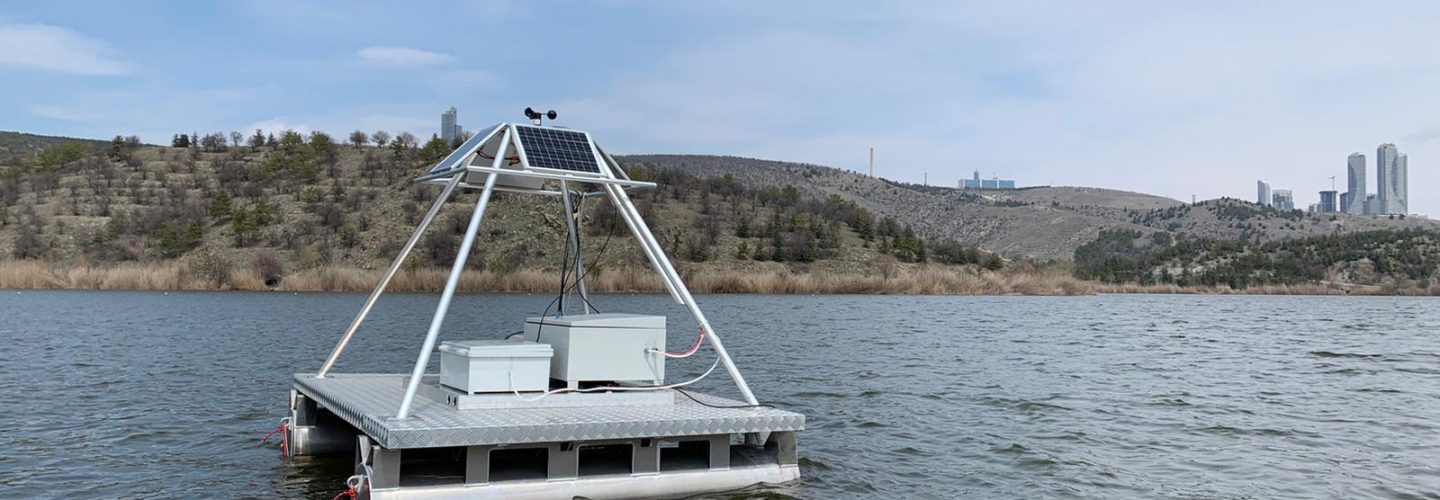
Turnover is a natural phenomenon that results in complete mixing in stratified lakes and reservoirs mostly due to elimination of water temperature difference between upper and lower layers. In eutrophic water bodies, a turnover may result in low dissolved oxygen levels across the water body as lower layers can be anoxic. Restoration of dissolved oxygen concentrations back to suitable levels takes some time. During a turnover, significant environmental and socio-economic impacts can be observed. For instance, fish farmers can greatly be impacted by loss of fish, aquatic ecosystems can be disturbed, odor and water quality problems may occur.
This project aims to develop a cost-efficient real-time monitoring, warning and emergency action system to minimize aquatic species deaths due to abrupt changes in oxygen levels in lakes and reservoirs due to turnover, which is called as the Turnover Response System. In this system, a turnover response model is proposed which would obtain real-time data from field, make an assessment and autonomously initiate in-situ aerators to eliminate the conditions leading to fish kills.
The system has been implemented at Lake Eymir, which has been significantly impacted by turnovers in the past. Since then, real-time data acquisition has been carried out. Thanks to the system data of DO, pH, salinity, wind speed, depth, temperature, conductivity, total dissolved solids, and turbidity parameters are collected in 3 different layers of the Lake Eymir in 15-minute periods. The collected data is visualised in Grafana in real time. Via the link an example from the real time data can bee seen.
This project recieved Best Paper Award on "AQUA≈360. Water for All - Emerging Issues & Innovations" conference with Prof. Dr. Ayşegül Aksoy's presentation named "An autonomous system for minimization of turnover effects in eutrophic lakes".
PROJECT ACTIVITIES
- Selection of potential locations for sensors and aerator
- Field trips for finalization of location selection
- Calibration and testing of equipment in laboratory, performance checks
- Building the monitoring station
- Operational tests and checks at the study site
- Interface software development for data transfer from sensors
- Data postprocessing and visualization using Grafana
- Real-time field data acquisition and visualization
- Turnover response system conceptual model development
- Algorithm coding: Software development
- Autonomous aerator operation demonstration
- Workshop
- Integration of the experience into a graduate level course as a case study
- Website
- Leaflets to provide information about the project and increase public awareness